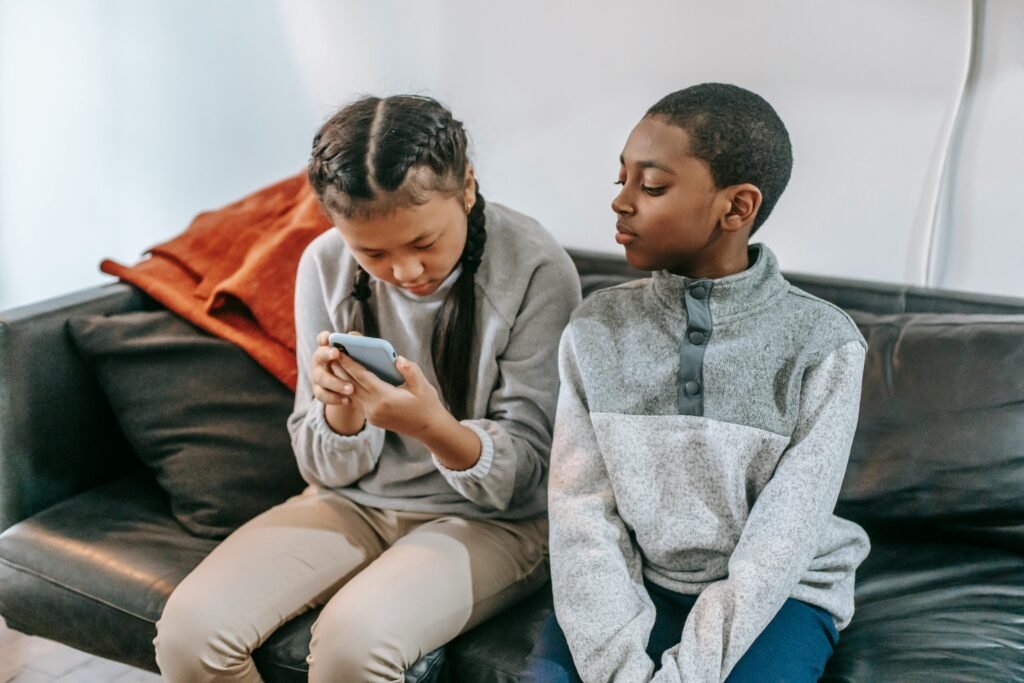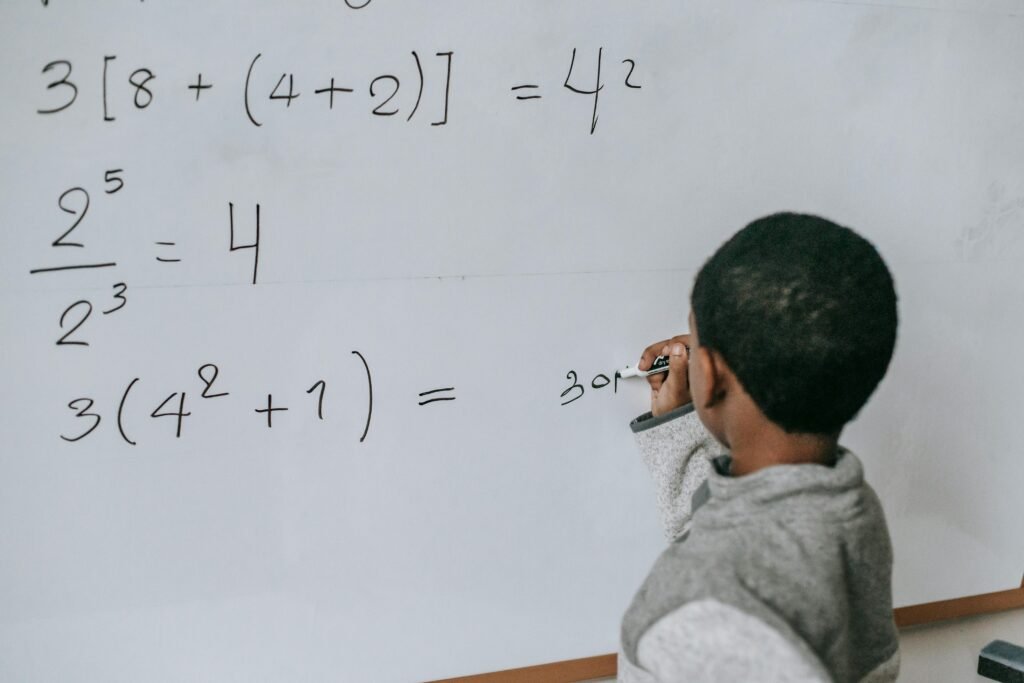It’s no secret. Kids love short videos. Whether it’s TikTok dances, funny Reels on Instagram, or cool Shorts on YouTube, short-form videos are everywhere. They’re fun, quick, and super addictive. But here’s the big question every parent is quietly asking:
Teens spend an average of 91 minutes per day on TikTok
That’s more than an hour and a half. Every single day. Just on TikTok.
Now think about this: if your child spends 91 minutes daily on TikTok, that adds up to over 10 hours every week. That’s nearly a full school day gone to scrolling.
At first, it might not feel like a big deal. They’re just watching funny videos, right? But here’s the truth: that 91 minutes isn’t just time passing — it’s energy, attention, and mental focus being spent.
When your child sits down to study, their brain isn’t starting fresh. It’s already been overloaded by fast-moving, dopamine-packed content. And because their brain is used to switching every few seconds on TikTok, it struggles to stay on one thing — like math or science homework.
What can you do?
Start by having an open talk with your child. Ask how they feel after watching TikTok for a while. Tired? Distracted? Forgetful?
Then try setting a daily screen time limit together. Make it a fun challenge. For example, see if they can cut it down to 60 minutes, then reward them with something special — not a new gadget, but quality time, like baking together or a weekend walk.
Also, encourage “scroll-free” zones in your home. During homework hours, all short-video apps are off. The earlier this habit starts, the easier it becomes.
TikTok is fun. But fun shouldn’t steal focus.
YouTube Shorts views now surpass 70 billion daily
Yes, 70 billion views. Every single day. That’s not a typo.
YouTube Shorts have become one of the biggest time-eaters for kids and teens. These videos are short, exciting, and endless. When one ends, the next one starts without a click.
That means your child doesn’t even need to move their finger to keep watching. The app is designed to keep them locked in.
Imagine your child sitting down to study. They decide to “just watch one video” before starting. But one becomes five. Then fifty. Suddenly, thirty minutes are gone. The energy to study is gone too.
That’s the power of the scroll.
What can you do?
Teach your child to watch with a purpose. Ask them to explain why they’re watching a video. Is it for learning? For a break? For inspiration?
Then introduce a fun idea: the “Watch & Walk” rule. After 10 minutes of videos, they must take a 2-minute walk. This tiny movement breaks the loop. It helps the brain reset.
Also, consider using apps like “ScreenZen” or “StayFree” together. These apps track how long short videos are being watched. Not to punish, but to understand. Let your child see the number and talk about it. Awareness changes behavior.
Short videos aren’t bad. But without limits, they take over.
Instagram Reels boost screen time by 24% among teen users
That’s nearly a quarter more time added to the screen — just because of Reels.
Instagram was already popular. But with Reels, the scrolling never ends. Reels look fun and quick, but they’re sticky. Teens get pulled in, and before they know it, time flies.
The tricky part? Teens feel like they’re doing “nothing” while watching. It’s just a few minutes, right? But the screen time keeps stacking up.
24% more screen time means less time to play outside, read a book, or focus on homework. It also means the brain stays in “scroll mode” longer, making it harder to focus later.
What can you do?
Create a “Tech Schedule” with your child. Keep it simple. For example:
- Homework from 4:00 to 5:00
- Short video time from 5:00 to 5:30
- Then dinner or outdoor play
When your child has a clear plan, they feel more in control. It’s not about banning Reels — it’s about balancing them.
Also, try “Reel-Free Sundays” as a family. Replace screen time with board games, nature walks, or just being together. Your child might resist at first. But over time, these moments become the best part of the week.
Reels add time to screens. Let’s add life back to learning.
65% of teens say short videos are their main source of entertainment
More than half of all teens today turn to short videos first when they want fun. Not books, not games, not even full movies — just 15-second clips.
Why? Because they’re fast, exciting, and always changing.
But here’s the problem. If your brain gets used to this kind of “snack entertainment,” it starts to reject slower, deeper things. Like reading a chapter book. Or writing an essay. Or solving a tricky science problem.
The brain begins to crave constant change. And study time? It feels slow. Boring. Even painful.
What can you do?
Don’t fight entertainment — replace it.
Find high-quality, engaging learning platforms that feel fun. At Debsie, we mix learning with games, challenges, and storytelling. When kids enjoy learning, it doesn’t have to compete with short videos. It becomes their new favorite.
You can also create a “Fun List” together — things your child loves that don’t involve a screen. Baking, painting, puzzles, LEGO. Let them choose. Then gently encourage time with these things during breaks.
When short videos are the only entertainment, they win. But when life is full of joy, videos become just one part of the puzzle.
56% of students report watching videos during homework
Yes, more than half. And not just for learning.
Many students now treat homework time like background music time — except instead of music, it’s TikToks or Reels playing on the side.
But here’s the truth: the brain doesn’t multitask well. When it’s watching and studying at the same time, it switches back and forth. And that switching makes it harder to remember things.
It’s like trying to fill two cups from one small stream. Neither one fills properly.
What can you do?
Encourage “Deep Work Time.” That means no screens, no noise — just 20 to 30 minutes of pure focus. Then take a real break. Play. Dance. Laugh. Then come back for another session.
Use timers. Set a 25-minute study time. Call it a “Focus Sprint.” After the sprint, your child earns 5 minutes of video time. Then go again.
Slowly, their brain learns to love focus. And they start finishing work faster — with better results.
4 out of 5 students admit short-form videos distract them from studying
That’s 80%. A huge number.
Most students know these videos distract them. They even say it themselves. But they still can’t stop. Why? Because short-form videos are designed to pull you in. Each swipe gives a little hit of dopamine, that feel-good brain chemical. And just like that, they’re hooked.
Even if they put the phone down, the mind keeps wandering. “What’s new on my feed?” “Did that video get more likes?” “Maybe I’ll just check real quick…”
This distraction doesn’t just make studying take longer. It also makes it harder. The brain takes time to refocus after each tiny distraction. So even five seconds of scrolling can hurt ten minutes of focus.
What can you do?
Talk to your child about this stat. Let them know they’re not alone — almost every student feels this way.
Then try the “Phone Basket Rule.” During study time, all phones go into a basket in a different room. Not on the table. Not in a pocket. Far away.
Also try the “Focus Buddy” system. You and your child both set a task and work quietly for 20 minutes. No phones. At the end, you both check in. This makes focus a team effort — and it feels less lonely.
Kids aren’t lazy. Their brains are just under attack from distraction. Let’s help them fight back.
TikTok’s algorithm causes users to lose track of time in 87% of sessions
Think about that. Almost every time someone opens TikTok, they lose track of time.
That’s not an accident. TikTok’s algorithm is designed to know what your child likes — and then show it nonstop. Funny cat videos? Inspiring speeches? Cool tricks? It lines them up, one after another.
There’s no pause. No end. Just swipe, swipe, swipe.
Before they know it, an hour is gone. And when they try to study afterward, their brain is full — not with learning, but with random noise.
What can you do?
First, help your child notice this pattern. Ask them to set a timer for 10 minutes before opening TikTok. When the timer rings, they pause and ask: “Do I want to keep watching or take a break?”
This small act of awareness can break the cycle.
Second, use apps like “One Sec.” It creates a short delay every time your child tries to open TikTok. That delay gives their brain a chance to pause — and choose differently.
Finally, help your child build a “Study First” habit. For example, no TikTok until one assignment is done. Make it a game. Track streaks. Reward wins.
Losing track of time is common. But with the right tools, we can bring focus back.
62% of high schoolers feel they study less due to social media use
More than half of high school students know this is happening. They can feel it. They want to study more, but they keep reaching for their phones.
That leads to stress. Guilt. Feeling behind.
Even when they’re not watching videos, they’re thinking about them. That mental load slows everything down. Studying feels harder. Focus feels impossible.
And when test time comes? Panic.
What can you do?
Create a calm, phone-free study space at home. Make it cozy. Simple desk. Good light. No phones allowed.
Then help your child build a “Focus Routine.” Start small. Maybe just 15 minutes of study, every day, at the same time. The routine makes it easier to start. And once they start, they usually keep going.
Talk about goals. Not grades — but dreams. Ask, “What do you want to get better at this year?” Then tie study time to that dream.
And remind them: every minute of focus is a gift to their future self.
The average attention span of Gen Z has dropped to 8.25 seconds
Less than 9 seconds. That’s how long most young people can stay focused on one thing before their mind starts to wander.
Compare that to the average goldfish — which has an attention span of 9 seconds.
Now, Gen Z is incredibly smart. Creative. Bold. But their environment — especially short-form video — is rewiring their brains for fast switching, not deep focus.
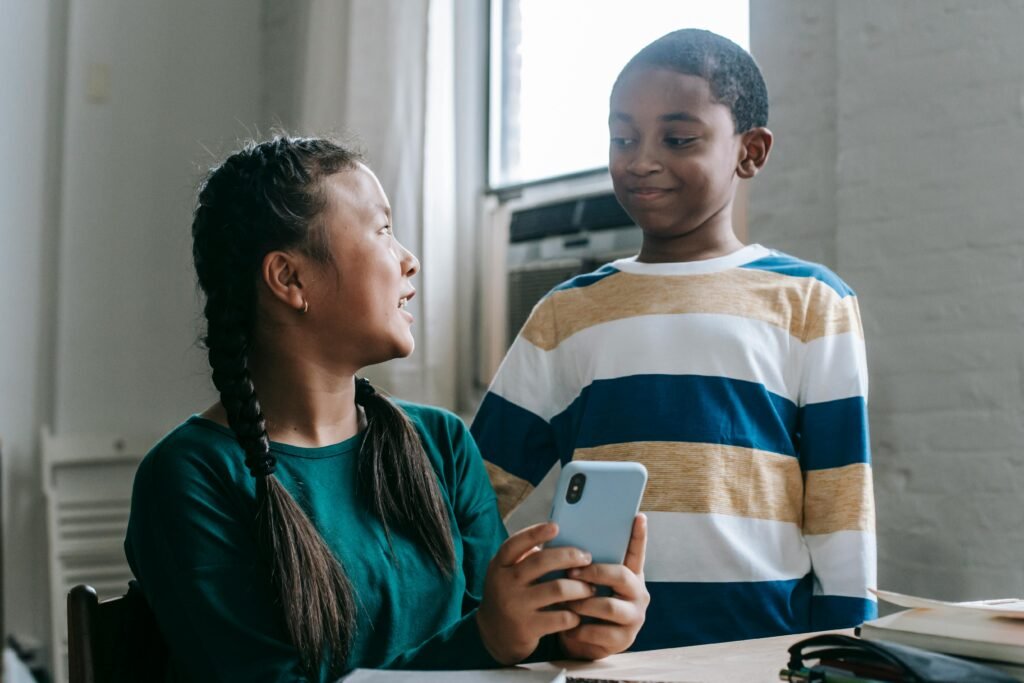
And school, real learning, even friendships — these things all need deep focus.
What can you do?
Train the attention span like a muscle.
Start with simple games: puzzles, memory cards, or even “Simon Says.” These games build focus without feeling like work.
Use timers to build “Focus Time” slowly. 5 minutes. Then 10. Then 15.
Celebrate progress. Show your child how they’re improving.
Also, lead by example. When you’re reading or working, stay off your phone too. Let them see that focus is a family value.
Our kids don’t need to be like goldfish. With support, they can be focused, thoughtful, and ready for anything.
Students who use TikTok more than 2 hours a day score 13% lower in exams
That’s a big difference. Imagine two students — both smart, both hardworking. One spends 30 minutes on TikTok daily. The other spends 2+ hours.
Come test day, the second student scores 13% lower.
Why? Because time isn’t the only problem. It’s also about mental energy. The more time spent on short videos, the more scattered the brain becomes. Sleep quality drops. Memory gets foggy. And even when studying, their mind keeps jumping.
That’s how the grades slip — slowly, quietly.
What can you do?
Talk to your child about this stat. Show them how small habits add up.
Try the “30-Day Reset.” For one month, limit TikTok to 30 minutes a day. Track the change. How do they feel? Are they sleeping better? Focusing more?
Then, celebrate the wins — not just grades, but better moods, more time, and clearer thinking.
Let them feel the difference.
1 in 3 students opens a short-video app within 5 minutes of studying
Picture this. Your child opens their notebook, picks up a pencil… and then picks up their phone. That’s what happens to one in every three students.
Before they even start their work, their brain is already somewhere else — on TikTok, Reels, or Shorts.
The problem here is not just time, it’s rhythm. Studying needs a calm, steady rhythm. But opening a video app right before studying creates the opposite. It floods the brain with noise and trains it to expect instant reward, not slow effort.
That makes the next step — actually starting the homework — feel hard, boring, or even impossible.
What can you do?
Build a pre-study ritual. Not a long one — just 2 to 3 minutes. It could be deep breathing, stretching, or even a short walk. The goal is to tell the brain, “Now it’s study time.”
Make it something your child chooses. If they love music, play a calming tune before homework. If they like drawing, give them 2 minutes to sketch first.
The key is this: swap the video-checking reflex with a calming start. Once the brain gets used to this habit, it becomes the new normal.
It’s not just about removing distractions. It’s about replacing them with better rhythms.
Only 29% of students turn off notifications while studying
That means 71% of students are trying to study while messages and alerts pop up. Ping. Ding. Swipe.
Each sound breaks focus. Even if they don’t open the app, the brain still notices. That tiny moment of distraction can take up to 23 minutes to fully recover from.
Imagine trying to build a tower, but someone keeps tapping your hand. That’s what studying with notifications feels like.
What can you do?
This one is simple — but powerful. Help your child turn on “Do Not Disturb” during study time.
Make it a non-negotiable part of their routine. Not a punishment — just part of their focus zone.
If they struggle with self-control, consider apps like “Forest” or “Focus Mode” on Android. These apps block notifications and reward your child for staying off distracting apps.
You can even do it together. When they study, you turn off your notifications too. This makes it feel fair — and sets a great example.
Focus grows in silence. Let’s give our kids the quiet space they need to think clearly.
74% of teens say they “can’t stop scrolling” once they start watching Reels
Almost 3 out of 4 teens feel stuck in a scroll trap.
They don’t want to scroll forever. They don’t mean to. But once they start, it’s hard to stop.
That’s because Reels (and other short-form videos) are designed to create a loop. There’s no “end.” Just one more. And one more. And one more.
That loop hijacks the brain’s reward system. And it makes stopping feel uncomfortable — like waking up from a dream.
What can you do?
Teach the “10-Second Pause” trick. Before opening Reels, your child takes a deep breath and asks, “How long do I want to scroll?” Then they set a timer for that amount.
When the timer rings, they stop. At first, this will be hard. That’s okay. With practice, it becomes easier.
Also, try the “Reverse Scroll.” For every 10 minutes of video time, they do 10 minutes of real-world activity — jumping jacks, coloring, organizing their desk, whatever they like. It breaks the loop gently.
When kids feel in control, they don’t need to fight the scroll. They rise above it.
68% of parents worry that short videos reduce their child’s study time
You’re not alone. Most parents see it happening. They watch their child lose hours to short videos. They feel helpless, worried, even guilty.
But here’s the truth: you don’t have to ban everything. You just have to guide gently.
When kids feel judged, they hide their habits. But when they feel supported, they open up — and change becomes possible.
What can you do?
Start with a family talk. Not a lecture — a conversation. Ask, “What do you like about TikTok or Reels?” Let them explain. Listen without interrupting.
Then share your concern honestly. “I notice it’s harder for you to study after scrolling. Have you felt that too?”
Together, create simple rules. Not as punishment — but as a plan. For example: No Reels during homework. Or 30 minutes of learning before 30 minutes of screen time.
And remember: your calm energy helps more than your rules. If your child sees you managing your screen time, they’ll follow your lead.
Worry shows you care. Now let that care turn into connection.
82% of students feel more tired mentally after watching short videos
That’s most of them. They watch to relax, but end up more tired. Why?
Because the brain is doing a lot of work — even if it doesn’t feel like it.
Each short video gives a quick hit of surprise, laughter, or emotion. Then it’s gone. The next one starts. Again and again. It’s like running on a mental treadmill.
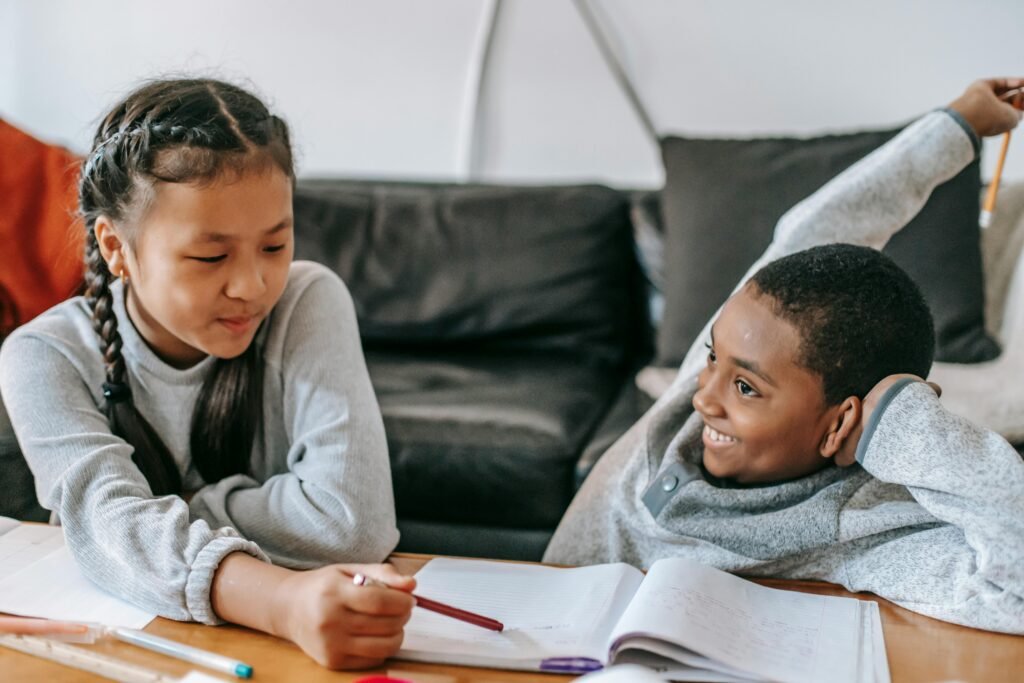
Over time, this makes the brain feel foggy. Tired. Overstimulated.
And when it’s time to study? There’s no energy left.
What can you do?
Talk about this stat with your child. Ask, “Have you ever felt more tired after watching videos?” You might be surprised how quickly they say yes.
Then try this experiment together: a video-free hour before studying. Instead of scrolling, they could play with a pet, drink water, stretch, or just relax.
After a few days, check in: “Do you feel different when you start homework after a screen break?”
Most students will notice better energy, sharper thinking, and more motivation.
Tired minds can’t focus. Let’s help our kids recharge the right way.
47% of students check TikTok during online classes
Nearly half.
That means while teachers are talking, students are multitasking — checking TikTok on the side. Not only does this hurt learning, it builds a bad habit: distraction during anything boring or difficult.
It’s like telling the brain, “You don’t have to pay attention if it’s not fun.” And that mindset can carry into real life — jobs, relationships, goals.
What can you do?
Start by asking gently, “Have you ever watched videos during class?” Make it a no-judgment zone. Let your child be honest.
Then share this idea: “Class time is brain time. Even if it’s boring, your brain is practicing how to stay with something — and that’s a superpower.”
Create a “Class Setup Zone” at home. Quiet space. No phones allowed. Encourage them to keep the phone in another room or use screen-blocking extensions during Zoom or Google Meet.
Over time, they’ll learn that focus isn’t just about school. It’s about becoming who they want to be.
Dopamine spikes from short videos can lower focus during schoolwork
Dopamine is a feel-good chemical in the brain. It’s like a reward signal. Every time your child sees something exciting — a funny video, a cool dance, a surprise — their brain releases dopamine.
Short-form videos are full of these little spikes. That’s why they feel so good.
But here’s the tricky part. When the brain gets lots of dopamine from videos, it starts expecting that same level of excitement all the time. So when your child sits down to do math or read history, their brain says, “Where’s the fun?”
It feels dull. Slow. Even frustrating. Not because schoolwork is bad — but because their brain has gotten used to the quick rush of dopamine.
What can you do?
Help your child understand what’s happening inside their brain. Use simple words. Say something like, “Your brain is used to the fun pop of videos. Let’s help it remember how to enjoy slow things again.”
Then create “Focus Challenges” that slowly rebuild patience. Start with short, calm tasks: organizing a drawer, building a Lego model, doing a jigsaw puzzle. These train the brain to feel calm and focused without big dopamine bursts.
Also, try adding mini-rewards after study blocks — a walk, a snack, a dance break. These help the brain feel good after focusing, not just before.
This way, your child’s brain starts to enjoy real focus again — the kind that brings long-term success.
53% of teens report “video hangover” – a foggy mind after scrolling
More than half of teens say they feel strange after a long scrolling session. Not rested. Not energized. Just… foggy.
This “video hangover” happens because the brain is overstimulated. It’s been watching fast videos for too long. It’s like going from a loud concert straight into a quiet classroom. The mind can’t switch gears fast enough.
So even if your child wants to study afterward, their brain isn’t ready. It needs recovery time. And during that time, learning feels harder than it really is.
What can you do?
Create “Cool Down Time” between scrolling and studying. After watching videos, ask your child to take 10 quiet minutes before touching schoolwork. They can lie down, close their eyes, doodle, or play with a pet.
You’re giving the brain a buffer zone — time to reset. This makes it easier to jump into learning without feeling foggy.
Also, notice when the fog hits. Help your child recognize it. “Do you feel a little cloudy after scrolling?” Let them name it. When kids can name their feelings, they can start to manage them.
Video hangover is real. But with a little space and support, it doesn’t have to control the day.
Average uninterrupted study time has dropped from 45 to 25 minutes in the last 5 years
Five years ago, most students could focus for 45 minutes straight. Now? It’s down to just 25 minutes.
That means students are losing almost half of their study stamina.
This drop didn’t happen by accident. It came from constant phone checks, shorter attention habits, and an environment filled with fast content.
And when study time is always interrupted, learning slows down. Memory weakens. Stress goes up.
What can you do?
Don’t push your child to “focus for hours.” That doesn’t work anymore. Instead, build focus slowly.
Use a timer — the “Pomodoro” method. Study for 25 minutes, break for 5. After four rounds, take a longer break. This matches the new attention span, but still gets things done.
Also, remove all distractions during those 25 minutes. No phones. No tabs. Just one task.
Make study blocks feel like wins. Give high-fives. Track them on a chart. When kids see their progress, they feel proud — and they want to keep going.
Study stamina isn’t lost forever. With the right habits, it grows stronger every day.
71% of students feel short videos make studying “boring” by comparison
Most students don’t hate learning. They just think it’s slow and boring — especially after watching fast, exciting videos.
That’s understandable. A TikTok video has music, jokes, edits, effects. A science textbook has… words. No wonder kids feel bored.
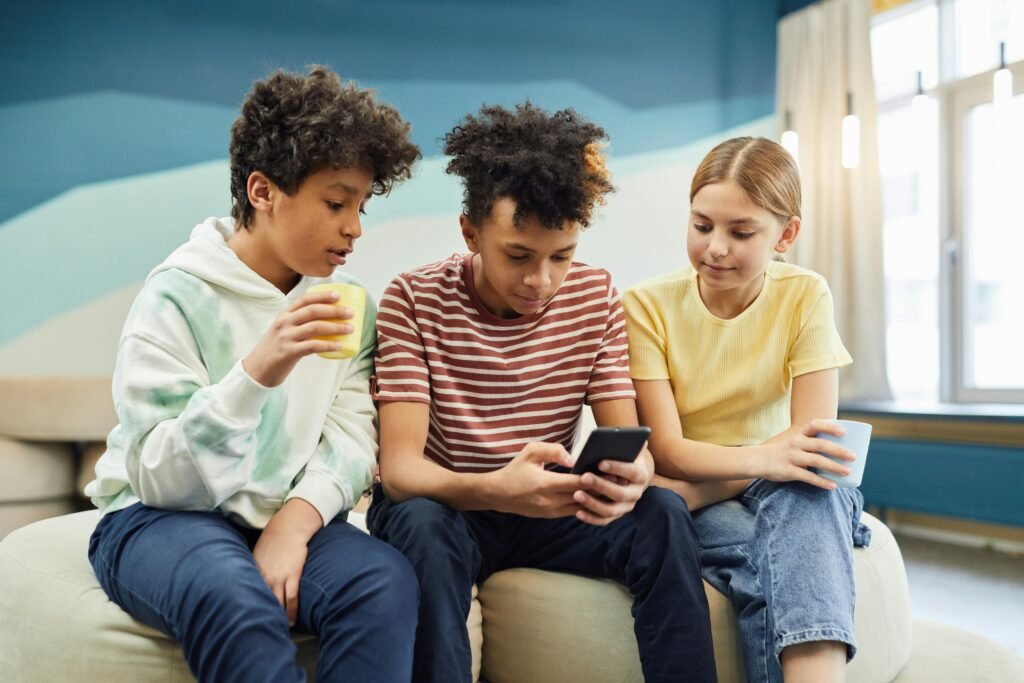
But here’s the truth: studying isn’t boring. It just feels that way when the brain is used to constant stimulation.
What can you do?
Make studying feel alive again.
If your child is learning about space, let them watch a cool documentary or build a model. If it’s history, act out a scene or draw a timeline together.
Use platforms like Debsie that turn learning into games and stories. When kids feel excited by learning, they don’t compare it to TikTok — they just enjoy it for what it is.
Also, help them see the “why.” Ask, “What can this skill help you do?” When kids connect schoolwork to real dreams — building robots, designing games, traveling the world — the work starts to matter.
Studying doesn’t need to be louder than TikTok. It just needs to be meaningful.
88% of students say they watch “just one more video” many times during study breaks
Almost every student has done it. They say, “Just one more,” and 20 minutes later, they’re still scrolling.
Why? Because short videos are designed to be endless. Each video teases the next. The brain never feels done.
And even during study breaks, the scrolling continues — making the breaks longer than the study time itself.
What can you do?
Redesign the break.
Instead of watching videos, offer fun break options that end naturally. A short walk. A snack. A silly dance. Watering plants. These breaks refresh the brain without hijacking it.
If your child really wants to watch a video, set a timer together. When it rings, they stop — no questions asked.
Also, help them reflect: “Did that break help you feel better or worse?” Over time, they’ll start choosing smarter breaks themselves.
Breaks are for rest, not rabbit holes. Let’s make them count.
Students using time-limiting apps score 10–15% better academically
This one’s exciting — and empowering.
When students use apps that limit their screen time, they often see a real jump in their grades. We’re talking about an increase of up to 15%. That’s the difference between a B and an A. And it’s not because the apps are magical. It’s because they help students do one thing: protect their focus.
These apps create gentle barriers. They make it just a little harder to access distractions, which is sometimes all a student needs to choose differently. That small pause — that moment of “do I really want to scroll right now?” — helps them make better choices.
What can you do?
Try this together: explore a few focus apps with your child and let them choose. Some popular ones are “Forest,” “Freedom,” and “Stay Focused.” These apps can block TikTok, Instagram, and YouTube during certain hours or after a set time limit.
You can even make it fun. Set a shared challenge: “Let’s both use a screen timer this week and see how much more we get done.”
It’s not about control. It’s about support. These tools give kids the power to protect their own time. And when they do, better grades often follow.
49% of students say they “feel behind” because of wasting time on Shorts or Reels
That’s nearly half of all students walking around with guilt in their chest. They know they’re falling behind. They feel it — and it hurts.
The worst part? It becomes a cycle. The more behind they feel, the more overwhelmed they get. So what do they do? Escape into more videos. And the cycle repeats.
This emotional weight can turn into anxiety, poor sleep, and a drop in confidence.
What can you do?
Start with compassion. Don’t blame them for falling behind. Instead, say something like, “I know it’s easy to lose track of time. Want to try a new plan together?”
Break big tasks into smaller steps. Help them win one small battle at a time.
You can also use what we call the “Catch-Up Hour.” Every evening, set aside 30–60 minutes just for catch-up — with no pressure. This gives your child a safe, structured space to get back on track.
And most importantly, remind them: feeling behind doesn’t mean they’ve failed. It just means it’s time to reset.
Only 12% of students have deleted short-video apps to focus better
That’s just 1 in 10 kids taking a big step to remove distractions from their lives.
Now, deleting apps isn’t easy. These platforms are fun, social, and often feel like a lifeline. But the fact that some students have done it shows something powerful: kids want to do better. They want to focus. They just don’t always know how.
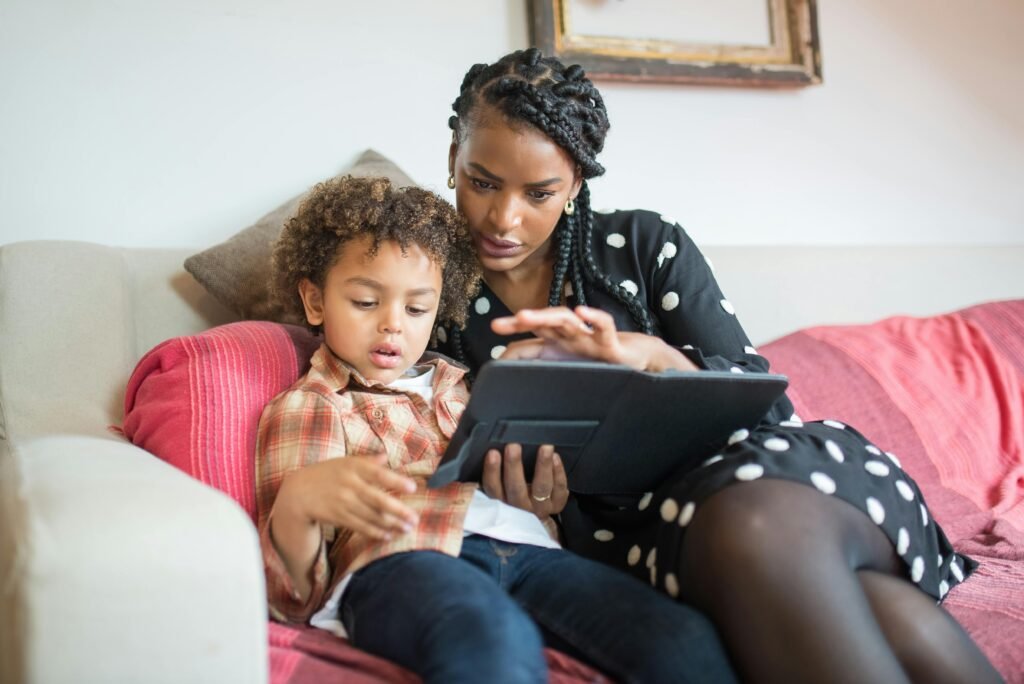
And the brave few who do delete those apps often say the same thing afterward: “I feel so much lighter.”
What can you do?
Don’t push your child to delete their apps right away. Instead, ask a question: “If you had one week without TikTok or Reels, what do you think would happen?”
Let them wonder. Let them be curious.
Then suggest a “30-Day Cleanse.” They can delete the app for just one month and see how they feel. Not forever — just an experiment.
You can even join them. Delete one app yourself and track how your focus improves. Make it a shared journey.
And if they do delete an app? Celebrate that bold move. It’s not easy — and it deserves real praise.
3 out of 5 students say they regret time lost to short videos each day
That’s a sad truth. Most students go to bed feeling regret. Not about schoolwork — but about time. Time they lost. Time they meant to use wisely. Time they can’t get back.
Regret is a heavy feeling, especially for kids. It builds over time and becomes shame — which makes it harder to change habits. Kids start saying things like, “I’m just bad at focusing” or “I’ll never catch up.” That’s not true. But the regret makes it feel that way.
What can you do?
Help your child trade regret for action. Ask them each night, “What’s one thing you’re proud of today?” It might be a small thing — doing homework on time, resisting a scroll session, or remembering to take a break. These wins matter.
Also, help them set a short “intention” each morning. Just one thing. Like “I’ll study for 20 minutes before checking my phone.” When they complete that goal, they go to bed feeling proud instead of regretful.
Regret isn’t bad. It’s a sign that your child cares. Now let’s help them turn that caring into small, powerful choices.
80% of teachers report social media has reduced students’ ability to concentrate
Teachers are on the frontlines. They see the change every day.
Kids zone out faster. They lose track of instructions. They need more reminders. It’s not because they’re lazy or not smart. It’s because their attention is under constant attack.
And when eight out of ten teachers are saying the same thing, we need to listen.
What can you do?
Support your child’s teachers by reinforcing focus at home. Create a home routine that mirrors classroom expectations — quiet study times, no phones at the table, clear work spaces.
Also, help your child rebuild their “focus muscle.” Encourage quiet hobbies like reading, drawing, or even building things. These activities train the brain to stay with one task.
If teachers say your child is struggling to focus, don’t take it as criticism. Take it as insight — and an invitation to work together.
Focus can be rebuilt. But it needs practice — just like math, writing, or sports.
Teens who reduce TikTok use to under 30 minutes/day see a 20% increase in study hours
Here’s a stat full of hope. Just by cutting back a little — not quitting, not deleting, just reducing to 30 minutes — teens see a 20% jump in study time.
That’s a huge return for a small change. And it shows one key truth: kids don’t need to go cold turkey. Even small steps make a big difference.
What can you do?
Help your child set a daily TikTok limit. Not a strict ban — just a cap. Most phones have built-in screen timers. Use them together.
Track the difference for one week. How many minutes of study did they gain? How did they feel?
Let the results speak for themselves. When kids see the benefit, they’re more likely to stick with the habit.
It’s not about zero TikTok. It’s about smart, balanced use — and getting their time back.
Students who block social media during study hours complete homework 40% faster
That’s almost half the time saved — just by removing one distraction.
Imagine your child finishing a one-hour assignment in just 36 minutes. That’s 24 minutes they get back. Every day. That adds up to hours every week.
And here’s the best part: when they finish faster, they feel better. More confident. More relaxed. Less overwhelmed.
What can you do?
Set a clear rule: study time = no social media. Use a timer if needed. Once it’s up, they can check their apps guilt-free.
You can even create a “Homework First” agreement. For every day they stay social-media-free during homework, they earn something they enjoy — not money or toys, but time, freedom, choice.
Also, remind them: getting work done fast doesn’t mean rushing. It means working smart. And smart kids know how to protect their time.
Short-form video users are twice as likely to delay assignments
Procrastination is a growing problem. And short videos make it worse.
These videos offer instant fun, zero effort, and no pressure. So when your child is faced with a hard assignment, their brain says, “Let’s do something easy instead.” And once the delay starts, it’s hard to stop.
What begins as a “5-minute break” becomes a whole evening lost.
What can you do?
Teach your child about “first steps.” Instead of starting the whole assignment, they just start with one small piece. Write the title. Open the book. Read the first paragraph.
This small movement breaks the mental wall.
Pair this with “earned scroll time.” No Reels until they take that first study step. Once they do, they often keep going — because momentum is powerful.
Delays are normal. But when your child learns how to take small steps first, they stop avoiding and start achieving.
64% of students say they “want help” managing their short-video screen time
Let’s end this section with hope.
Most students aren’t fighting you. They’re fighting themselves — and they want your help. They just don’t always know how to ask.
They feel stuck in a scroll loop. They want better focus, better grades, better sleep. They just need someone to guide them — gently, kindly, without judgment.
What can you do?
Be that guide. Not the rule-maker. Not the screen police. Just a steady, calm helper.
Ask questions: “What’s working for you right now?” “What feels hard?” “How can we make this week better together?”
Create habits, not punishments. Offer tools, not shame. And walk the journey with them.
Because when a child says, “I want help,” what they’re really saying is, “I still believe I can change.”
And that belief? That’s where everything starts.
91 minutes per day on short videos = over 22 full days per year
Let’s do the math.
If your child watches short videos for 91 minutes a day — and many do — that adds up to 33 hours a month. That’s almost 400 hours a year. That’s the same as 22 full 18-hour days spent only watching short-form content.

Not playing outside. Not reading. Not learning. Just… watching.
Imagine what your child could build, create, or discover with even half of that time. That’s not to say all video time is bad — but this number is a wake-up call. Time is the one thing they’ll never get back.
What can you do?
Help your child visualize their time. Make a simple chart that shows what 400 hours looks like. Then ask, “What would you want to do if you had an extra 22 days this year?”
Let them dream. Let them imagine. Then challenge them to reclaim just 30 of those hours — one hour a week.
Track how they spend their time. Not to control them, but to empower them. Once they see where time goes, they’re more likely to change where it flows.
Attention resets take 23 minutes after each notification distraction
It takes nearly 23 minutes for the brain to fully refocus after being interrupted by a notification. That means if your child checks their phone three times during homework, they’re losing over an hour of productive thinking.
Even worse, they don’t always realize it. They think they’re being efficient — but their brain is constantly restarting.
What can you do?
Teach them the concept of the “Focus Bubble.” It’s a quiet zone where nothing pops, pings, or buzzes. Phones go on airplane mode or in another room. The goal is to let the mind stay in one flow.
Make a family focus rule. For example, between 6:00–7:00 PM, the whole house goes phone-free. That way, your child doesn’t feel singled out — and you all get time to think clearly.
One hour of undistracted work is worth more than three hours of scattered effort.
Kids with screen-free mornings have better focus all day
When your child wakes up and dives straight into TikTok or Reels, their brain starts the day in reactive mode — jumping from one thing to the next.
But when mornings are calm and screen-free, the brain gets time to settle, plan, and feel in control. That sense of calm focus often lasts the whole day.
What can you do?
Make a “No Scroll Until School” rule. You can call it “Brain Breakfast” — 30–60 minutes in the morning with no screens, just calm starts: brushing teeth, eating, reading, talking.
Create a new habit: a morning playlist, stretching together, or a short journaling session.
Mornings shape the mind. Let’s start them strong.
The top 5% of focused students report the least screen time
In almost every study, the students who perform best — academically and emotionally — report the lowest amount of screen time. That’s not a coincidence.
Less screen time means more real conversations, more deep focus, and more sleep — all of which lead to better thinking, better memory, and less stress.
What can you do?
Set “Screen-Free Zones” at home: no phones at dinner, during homework, or right before bed.
Encourage offline fun: puzzles, crafts, journaling, building models, reading together. Make offline life rich and rewarding, so screens aren’t the only source of fun.
You don’t need to eliminate screens. Just give your child more ways to win without them.
90% of students say they’d use their phone less if it was “more fun to study”
Most kids don’t love wasting time. They do it because studying feels slow, hard, and boring in comparison.
But if learning felt fun and engaging, 9 out of 10 students say they’d naturally scroll less. That’s the real opportunity.
What can you do?
Bring energy into your child’s learning life.
Use platforms like Debsie that turn lessons into adventures, challenges, and games. Let your child study topics they choose, not just assigned work. Make it feel like a journey — not a chore.
Also, mix up how they study. Use flashcards, draw diagrams, watch quality educational videos, teach you what they learned — whatever helps them feel involved.
The more your child enjoys learning, the less they’ll need to escape from it.
One month off social media improves sleep and mood in teens
Just one month of reduced or no social media can lead to better sleep, less anxiety, and more happiness in teens. That’s not just about screen time — it’s about what the brain is doing instead.
Less comparison. Less overstimulation. Less mindless scrolling. More rest. More thinking. More peace.
What can you do?
Try a 30-day family challenge. Everyone chooses one app to delete or limit. At the end of each week, talk about how you all feel — not in a lecture, but in a light-hearted check-in.
Keep a simple “Mood Tracker” — a notebook or whiteboard with smiley faces for energy, sleep, focus, and mood.
Show your child that health is more than grades — it’s how you feel inside.
Students who take 10-minute “outdoor” breaks focus 35% better afterward
Stepping outside, even for just 10 minutes, gives the brain a full reset. Natural light. Fresh air. Movement. It’s the opposite of screen time — and the results are powerful.
Focus improves. Stress drops. Memory sharpens.
What can you do?
Add an “Outdoor Break” to your child’s study routine. After each study session, they walk outside. No phone. Just walk, skip, breathe, and move.
Even a balcony or backyard counts. The point is to refresh the senses.
You’ll notice they return to their work calmer, clearer, and ready to think.
30% of students say they forget what they just read after watching short videos
That’s a scary one. One out of every three students reads something — then watches a few videos — and can’t remember what they just studied.
It’s not because they’re lazy. It’s because the brain needs quiet to process and store new information. Fast videos interrupt that process and push the memory out.
What can you do?
Use the “Read + Reflect” system. After reading or learning something new, ask your child to explain it out loud — to you, a sibling, or even a stuffed animal. This helps lock in the memory.
Then create a “no screen zone” for 20 minutes after study time. Let the brain rest, absorb, and store what it just learned.
Memory needs silence. Protect that quiet moment.
Most top-performing students say they “guard their time like a treasure”
That’s a mindset shift.
Successful students don’t think of study time as a chore. They see it as gold. They protect it. Defend it. Use it wisely.
They understand something powerful: time is the one resource they control.
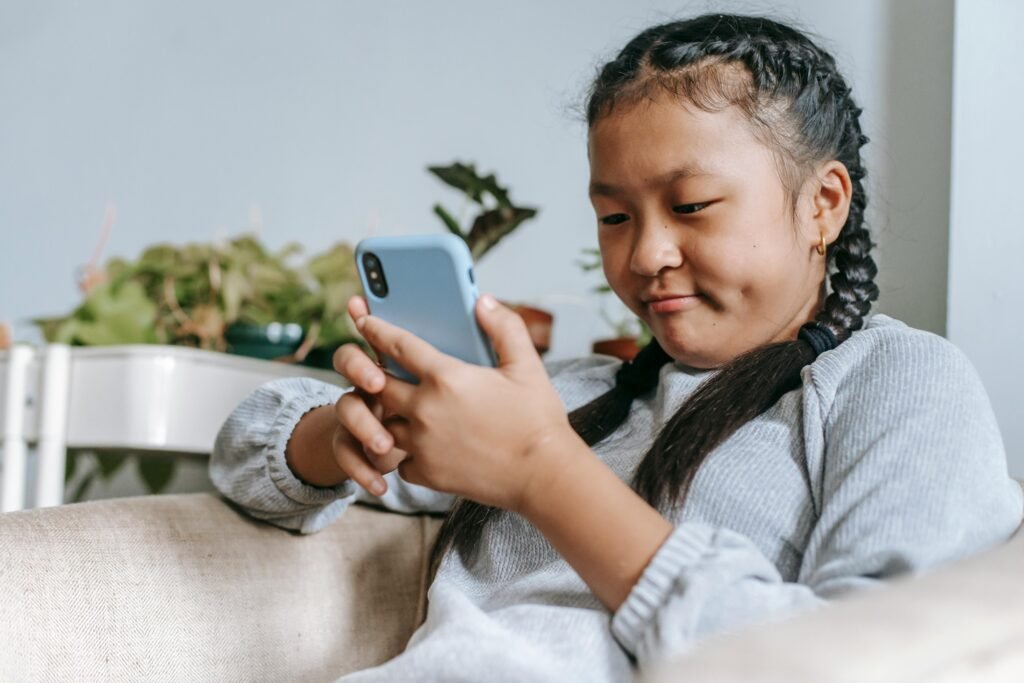
What can you do?
Talk to your child about what matters most to them. Help them connect time to their own dreams — not just school rules.
Say things like, “The time you protect today builds your tomorrow.” Make it inspiring, not scary.
And when they use their time well? Celebrate it. Every focused minute is a win.
Conclusion
We’ve covered a lot of ground — 30 powerful stats, countless insights, and real, actionable advice for families.
Here’s the bottom line: short videos aren’t evil. But they are sneaky. They steal minutes, energy, and focus without warning. And for students who want to grow, learn, and dream big — those things matter.
